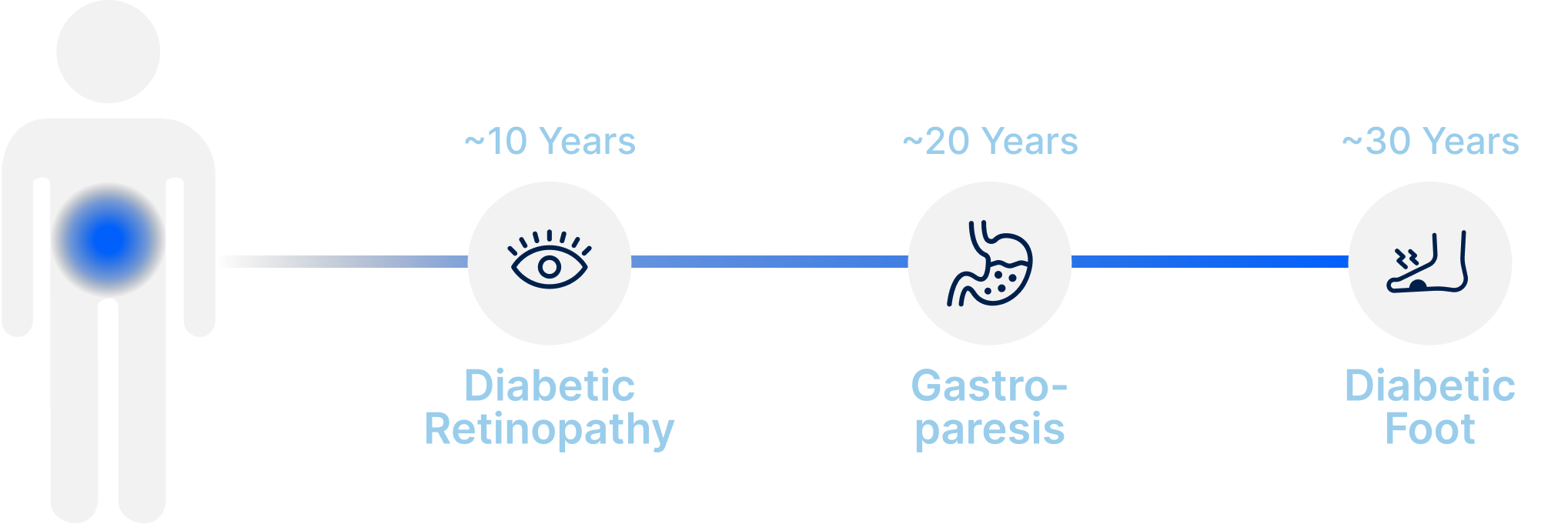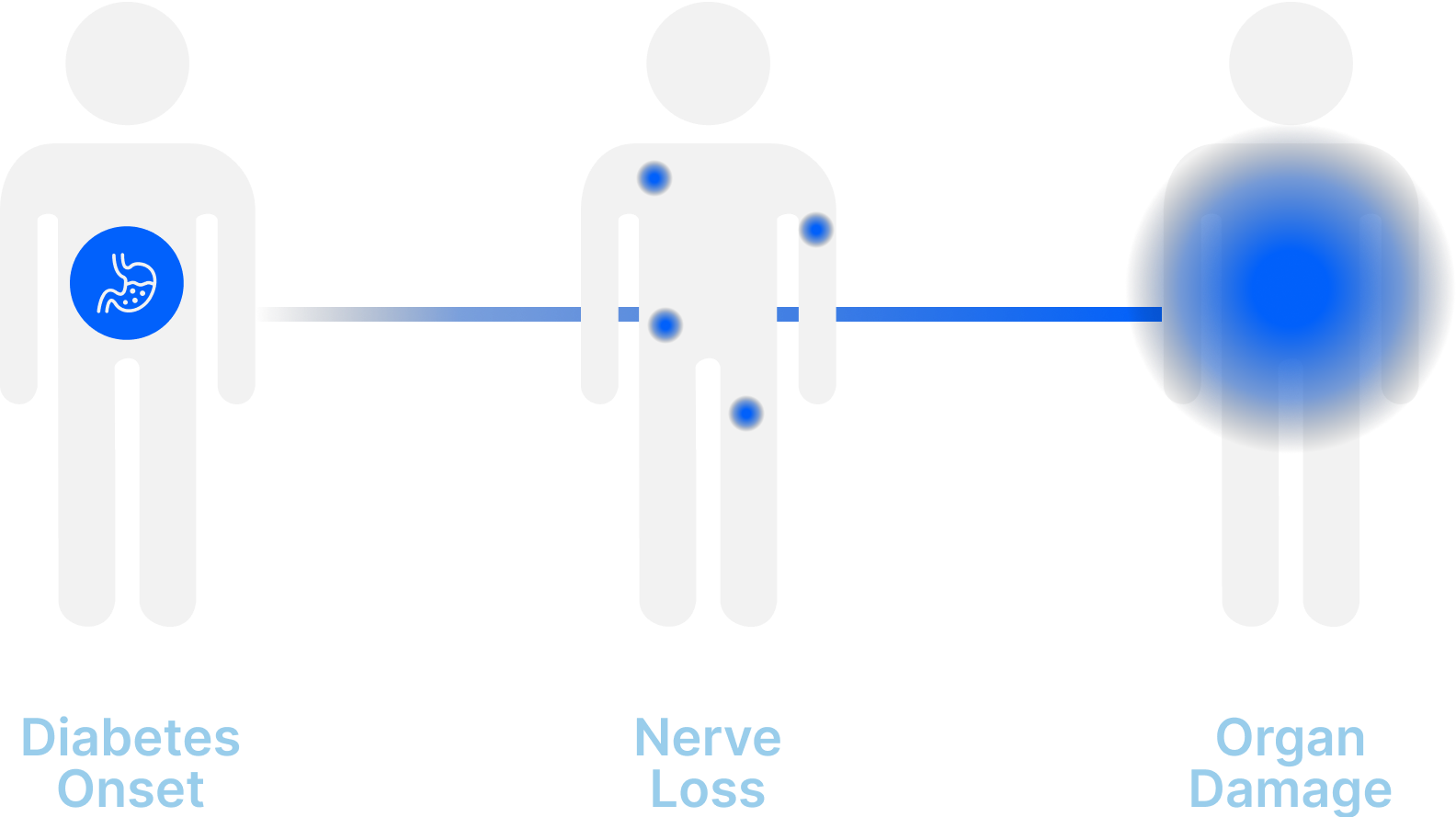The Scale
537 Million
Adults (Aged 20-79 years) are living with diabetes.

*IDF Diabetes Atlas (2021)
The Problem
+50%
Of people living with diabetes will suffer from neurovascular complications, and a vast majority will only be diagnosed after impact on quality of life (Organ damage).

*American Diabetes Association (ADA)
Early diagnosis and treatment is possible and affordable, but due to different reasons the vast majority of cases are either undiagnosed or diagnosed after substantial progression of complications.
A long, slow and progressive sequence of damage.
While the root cause is the same, the complications affect different systems of the body, and the progression of the damage advances at different rates for each.
Each deterioration is often measured as an isolated problem, and correlation is often missed due to the variability in the rate of progression.

Nerve loss precedes most permanent organ damage, and can be measured many years earlier, however it is not being used in diagnosis
Late identification, late treatment diminished efficacy.
Diagnosis often happens only after permanent organ damage has started and a clear impact on daily life is felt.
For example, Diabetic Retinopathy, a neurovascular complication, is often diagnosed after the ocular veins start deforming, making treatment options limited and the damage irreversible.
Observing nerve damage progression would have allowed for treatment up to 10 years earlier with a substantially higher chance of avoiding permanent damage.
